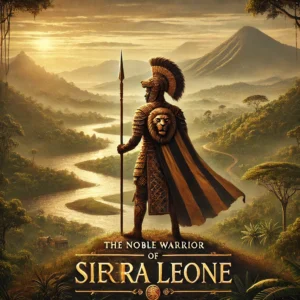The Mano River Union (MRU) operates as a regional body within West Africa and includes Liberia, Sierra Leone, Guinea, and Côte d’Ivoire as member states. Since its establishment in 1973, the MRU has advanced economic integration and regional cooperation, embodying diverse cultural and social systems that reflect centuries of migratory patterns, commercial exchanges, and historical linkages. The cultural anthropology of this region reveals how tradition interacts with modernity and globalisation in complex ways.
Multiple ethnic groups inhabit the MRU region, maintaining distinct linguistic traditions alongside their unique social hierarchies and cultural practices. The area features dominance from the Mande, Kru, and Atlantic linguistic groups, while significant ethnic populations consist of the Mende, Temne, Kpelle, Vai, Kissi, Gola, and Dan people (Zhou, 2018). Despite their linguistic parallels, these groups have preserved unique social identities developed from historical exchanges, including trade and conflict.
The MRU countries mainly follow patrilineal kinship systems yet feature matrilineal aspects within specific groups. The extended family structure is a pivotal social organization directed by the elders’ authority, making family decisions. Land ownership and inheritance rights alongside social duties are dictated by one’s lineage and clan ties (Dunn & Tarpeh, 2019). The Poro and Sande secret societies hold substantial power over socialization processes, governance structures, and traditional transitional ceremonies.
People living in the MRU region practice a blended religious system that combines elements from indigenous African beliefs alongside Islam and Christianity. The core elements of indigenous belief systems include respecting ancestors while practicing spirit worship and divination. Islam became prevalent among Mande-speaking peoples through trans-Saharan trade networks while Christianity gained widespread acceptance among Kru and Atlantic groups during colonial times. The simultaneous presence of various religious traditions leads to highly changeable religious identities.
People living in the MRU region practice a blended religious system that combines elements from indigenous African beliefs alongside Islam and Christianity. The core elements of indigenous belief systems include respecting ancestors while practicing spirit worship and divination. Islam became prevalent among Mande-speaking peoples through trans-Saharan trade networks while Christianity gained widespread acceptance among Kru and Atlantic groups during colonial times. The simultaneous presence of various religious traditions leads to highly changeable religious identities.
Historically, MRU region traditional economies have maintained their foundation through agriculture, hunting practices and local artisanal trade activities. Communities in coastal and inland areas depend on fishing and pastoralism as cornerstone occupations while rice, cassava, and cocoa cultivation continue as primary agricultural practices. Kola nuts, gold, and textiles represent key goods from the region’s extended trade history (Brooks, 2018). Resource exploitation and economic changes driven by globalization have disrupted traditional livelihoods and generated new cultural dynamics.
The MRU has endured major social disruptions because of civil wars, together with economic instability and people moving across borders. The civil conflicts in Liberia and Sierra Leone during the late 20th century resulted in massive population movements which fundamentally changed established social networks and cultural identities (Richards, 2005). After conflict, societies struggle with reconciliation challenges alongside national identity and cultural survival questions. The movement patterns of voluntary and forced migrants have created transformative changes in the artistic practices of urban communities.
Cultural Expressions: Music, Dance, and Oral Traditions The MRU region uses music and dance as essential mediums to represent its cultural identity and historical memory. Traditional oral historians known as griots preserve communal knowledge via storytelling and musical traditions, including poetry and song. The djembe and balafon drumming traditions are vital in social events and religious rituals (Charry, 2019). Current musical styles such as Afrobeat and reggae fuse historic rhythms with present-day elements demonstrating continual cultural development. Cultural anthropology of the Mano River Union region demonstrates how its people exhibit resilience while adapting to changes and maintaining strong social connections. Throughout history, traditional institutions, linguistic diversity, and artistic expressions have retained their importance in social life despite various challenges. The interaction between traditional customs and contemporary practices shapes the cultural landscape while revealing the complexities of West African societies.
